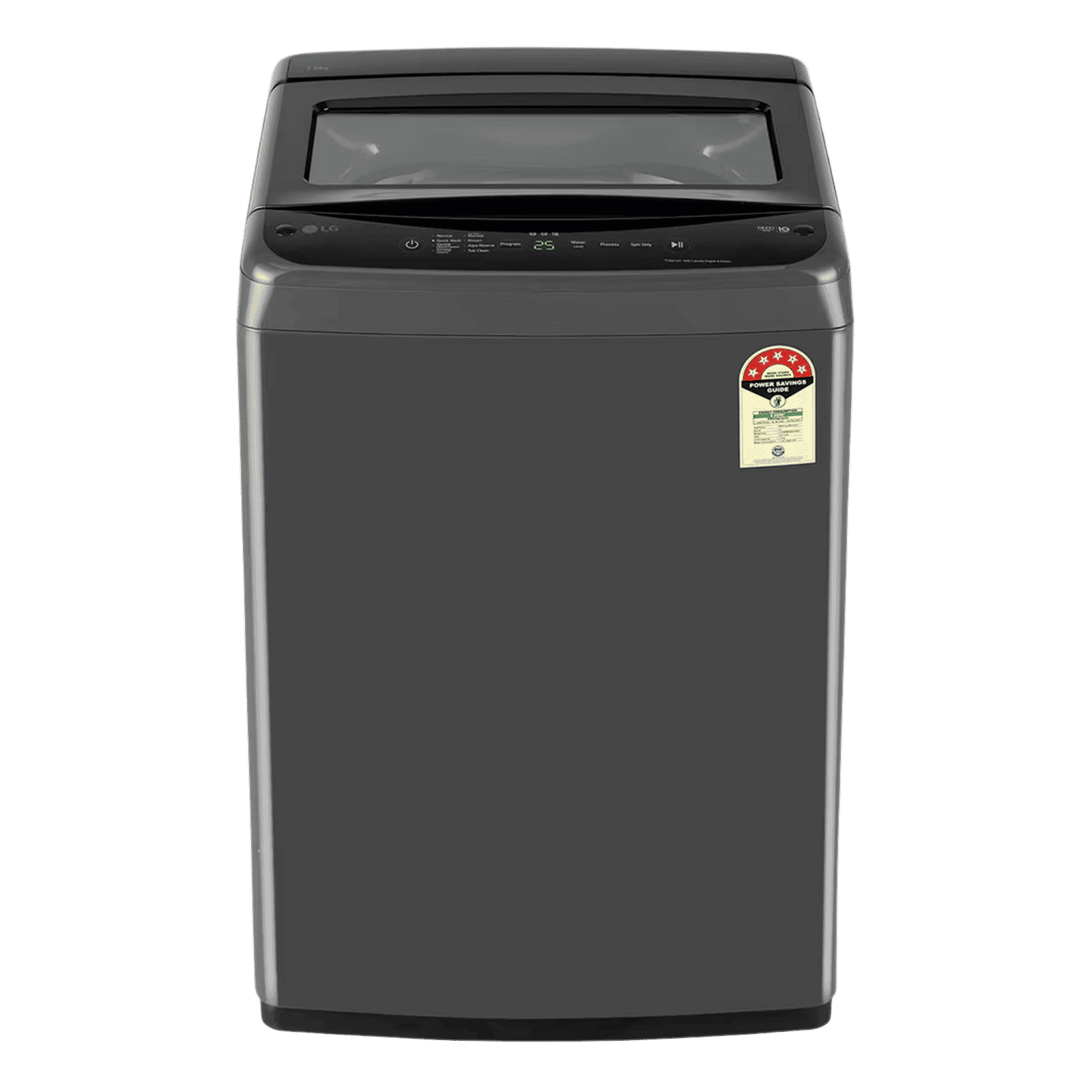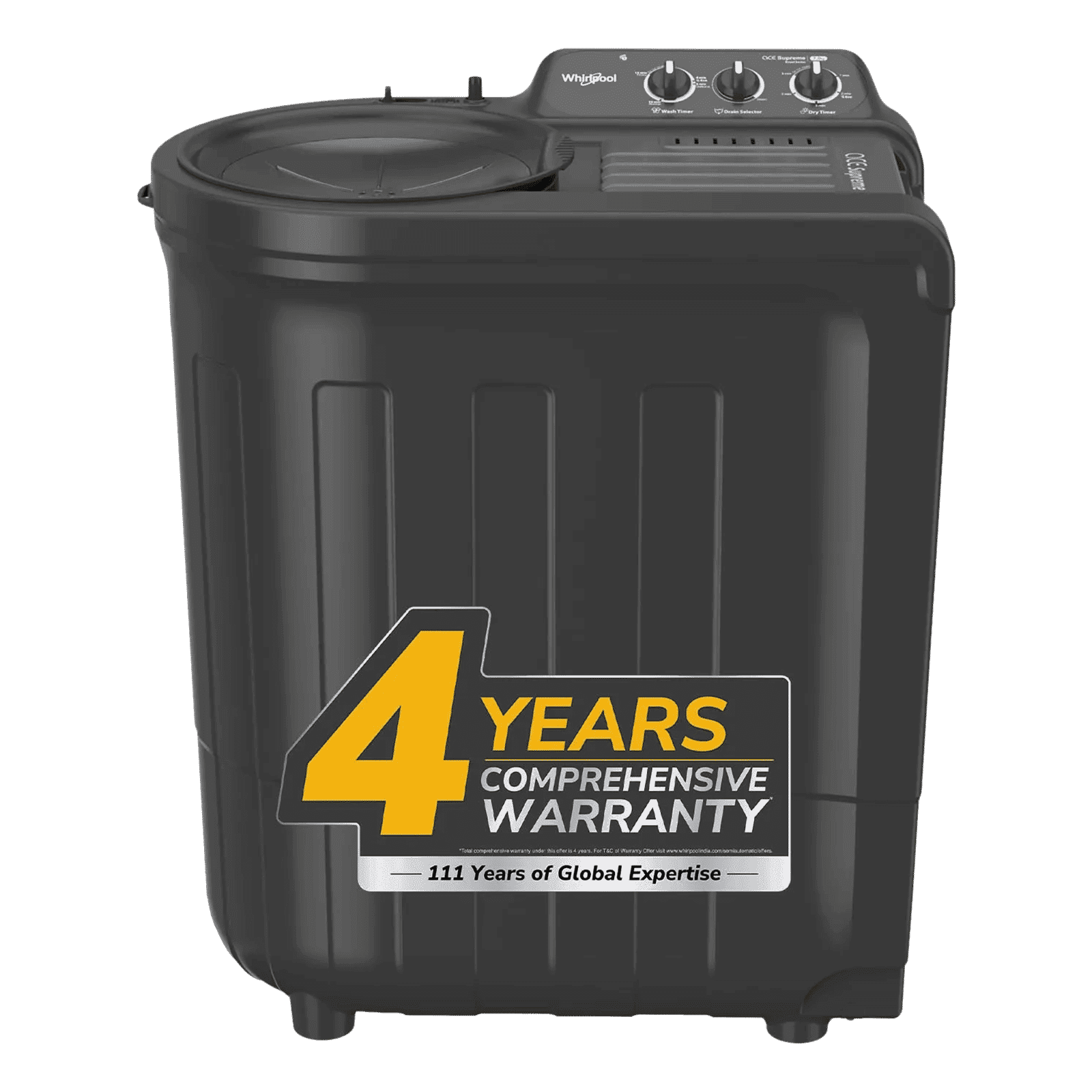(61)-63846a3a-b054-4043-9ca4-3e76aa86fa8c.webp&w=3840&q=75)
Home Appliances
•04 min read

Buy LG 7 kg 5 Star Inverter Fully Automatic Top Load Washing Machine (T70VBMB4ZD.ABMQEIL, Smart Diagnosis, Middle Black) online at best prices from Croma. Check product details, reviews & more. Shop now!
Has your reliable automatic washing machine suddenly stopped working? It can be incredibly frustrating when an essential home appliance lets you down at the worst possible time. In this post, we explore why your automatic washing machine is not working, share faqs on common issues, and offer troubleshooting steps to help you get back to a seamless laundry routine. By reading on, you will understand the common reasons washing machine stops working, learn effective troubleshooting steps and basic fixes, and discover expert maintenance tips to prolong your machine's life.
One of the most common culprits behind a malfunctioning machine is a problem with the power supply. Faulty power outlets, loose power cords, or even a tripped circuit breaker can prevent your washing machine from starting its cycle. Before diving into more complex fixes, ensure that the machine is properly plugged in, the power cord is intact, and that the outlet is supplying adequate power.
Your machine also relies on a steady flow of water. Kinked hoses or clogged filters can reduce the water pressure necessary for effective washing. Sometimes, the water valve might be unintentionally closed. A quick inspection of the hoses and ensuring the water valve is open can often resolve these issues. Regularly checking the hoses not only prevents immediate problems but protects the machine from long term damage.
Mechanical issues such as a faulty motor, broken belts, or damaged agitators are more serious. These problems are often signalled by unusual sounds, vibrations, or error codes. If you notice these symptoms, it may indicate that the internal components of your washing machine need attention. Keeping an ear out for irregular noises can be your first step in identifying serious issues before they evolve into costly repairs.
If your washing machine powers on but won’t commence a cycle, the problem could be linked to issues with the door lock or a malfunctioning control board. Sometimes the machine displays error codes which can help pinpoint the fault. Check whether the door is securely latched and any visible error indicators in the control panel are addressed by referring to the user manual for guidance.

Buy Whirlpool 7.5 kg 5 Star Semi Automatic Washing Machine with In built Scrubber (Magic Clean, 30291, Grey) online at best prices from Croma. Check product details, reviews & more. Shop now!
A common scenario is when the washing machine fills with water but fails to spin. This could be due to an unbalanced load or a faulty lid switch. In some cases, drainage problems might be the culprit. Ensuring that laundry is evenly distributed and that there’s no blockage in the drainage system can often restore the spinning function.
Error codes are designed to help you diagnose the issue. Common codes may indicate problems with water supply, mechanical parts, or sensor malfunctions. Always consult the user manual first to interpret error codes accurately. Small issues, when identified early by the error notifications, can often be resolved with basic maintenance or adjustments.
Before calling in a professional, there are a few simple DIY solutions that might restore your machine to working order. You can start by resetting the machine; sometimes unplugging it for a few minutes lets the system recalibrate. Other easy fixes include cleaning filters, unclogging hoses, and checking that the water inlet is open. Keeping your washing machine clean and free of debris can prevent many minor issues from developing into major faults.
While simple fixes often work, there are situations that call for professional help. Major issues such as persistent electrical faults, serious motor failures, or significant leaks require a trained technician. If you are unable to resolve the problem after checking the basic issues, a professional’s insight might be needed to accurately diagnose and fix the root cause.
Pro Tip: Don’t Ignore Warning Signs
Did you know that strange noises or unusual vibrations from your washing machine are often early warning signs of larger issues? Addressing these symptoms early can save you from costly repairs down the line. Keeping an eye (and ear) on the performance of your appliance can make a big difference in the longevity of your machine.
Regular maintenance is key to keeping your washing machine in top condition. A simple routine of cleaning the drum, checking hoses for any signs of wear and tear, and descaling the machine once in a while can lead to improved performance and longevity. Scheduled upkeep not only helps prevent unexpected breakdowns but ensures your washing machine continues to deliver efficient cleaning.

Buy BOSCH 8 kg Fully Automatic Top Load Washing Machine (Series 2, WOE802S7IN, Multiple Water Protection, Silver) online at best prices from Croma. Check product details, reviews & more. Shop now!
Balancing your load is crucial to avoid undue stress on the machine. Another important factor is using the right detergent in the correct quantity to prevent buildup in the machine. Avoid overloading the drum, as this can lead to mechanical failure and decreased performance over time. These best practices, when implemented regularly, help in keeping your washing machine running smoothly.
Start by checking the power connection, water supply, and any error codes indicated on the panel. If the issue persists, it may be necessary to consult a professional technician.
This can be caused by a faulty door lock, issues with the control board, or problems with the start button. Refer to the user manual for troubleshooting steps specific to your model.
Common issues include power outages, water supply disruptions, clogged filters, and mechanical malfunctions. Regular checks can help in identifying these early.
It might be due to a tripped electrical breaker, malfunctioning motor, or an overloaded cycle causing strain on internal components. Inspect these areas closely to detect the problem.
Most machines can be reset by unplugging for a few minutes and then plugging back in. Always refer to your washing machine's user manual for precise instructions.
In summary, understanding why your automatic washing machine is not working involves analysing a few common issues such as power, water supply, and mechanical problems. Following troubleshooting steps like checking the appliance’s error codes, ensuring proper load distribution, and performing routine maintenance can help remedy minor setbacks while prolonging the appliance's lifespan. If the problem persists, do not hesitate to seek professional assistance. Addressing warning signs early not only prevents further complications but also helps in maintaining the reliability of your home appliances, ensuring that your daily routine remains as seamless as possible.